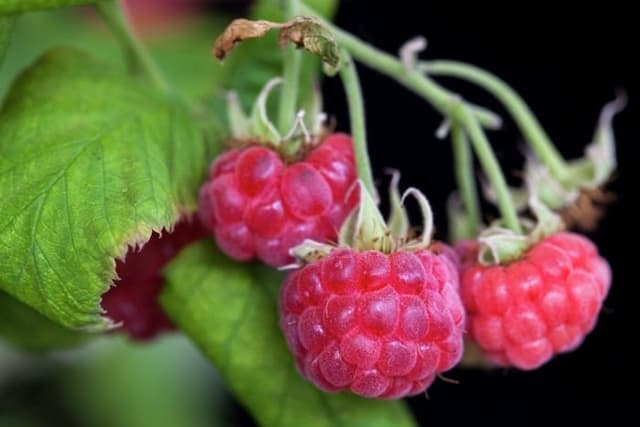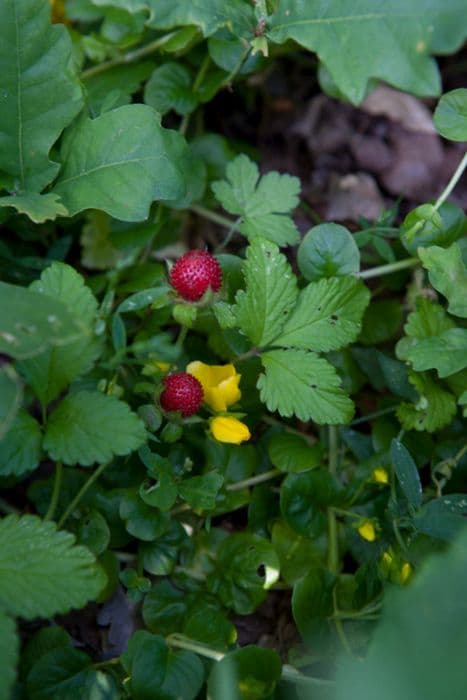Black cherry Prunus serotina



ABOUT
Prunus serotina, also known as Black cherry, Wild cherry, or Rum cherry, is a species of cherry that is native to North America. It is a deciduous tree that can grow up to 40 feet tall.
The bark is dark brown to black, smooth when the tree is young, but becoming rough and scaly as the tree ages. The wood is reddish-brown to dark brown, with a fine, straight grain and a smooth texture. It is strong and durable, and is often used for furniture, cabinetry, and flooring.
The leaves are simple and glossy, with a pointed tip, and a serrated margin. They are typically 2-4 inches long and 1-2 inches wide and dark green in color and turn yellow in the fall.
The flowers are small, white, and appear in clusters before the leaves in spring. They have five petals and are about 1/2 inch wide.
The fruit is a drupe, about 1/2 inch in diameter, that turns from green to red to black as it ripens.
About this plant
 Names
NamesFamily
Rosaceae
Synonyms
American cherry, Black cherry, Wild black cherry, Rum cherry, Mountain black cherry, Black choke, Cabinet cherry, Capulin, Rum cherry, Wild rum cherry
Common names
Cerasus serotina, Prunus caroliniana, Prunus virginiana var. serotina, Prunus virginiana var. melanocarpa
 Toxicity
ToxicityTo humans
Prunus serotina is considered to be toxic to humans if consumed in large amounts. The leaves, bark, and twigs contain cyanogenic glycosides, which can release cyanide in the body if ingested. The fruit is also known to cause stomach upset if consumed in large quantities.
Symptoms of cyanide poisoning include headaches, dizziness, nausea, vomiting, rapid breathing, and in severe cases, seizures, coma and death.
It's also important to note that while the fruit of the black cherry is not extremely toxic, it's best to consume it in moderation.
It is always best to consult with a doctor if you suspect that your children has ingested black cherry or any other potentially toxic plant.To pets
Black cherry is generally considered toxic to animals when ingested in large quantities. The tree's leaves, twigs and bark contain cyanogenic glycosides, which can release cyanide when metabolized.
Symptoms of cyanide poisoning in animals include difficulty breathing, dilated pupils, and red or dark-colored mucous membranes. In severe cases, ingestion of black cherry can be fatal.
It is always best to consult with a veterinarian if you suspect that your animal has ingested black cherry or any other potentially toxic plant.
 Characteristics
CharacteristicsLife cycle
Perennials
Foliage type
Deciduous
Color of leaves
Green and yellow in the fall
Flower color
White
Height
Up to 40 feet
Spread
Up to 25 feet
Plant type
Shrub
Hardiness zones
3
Native area
Eastern and Central America
Benefits
 General Benefits
General BenefitsBlack cherry is a popular ornamental tree, prized for its attractive flowers, glossy leaves, and attractive fall color;
Black cherry is also a valuable timber tree, prized for its strong, straight-grained wood that is used for furniture, flooring, and other applications;
Black cherry is a valuable food source for a variety of wildlife, including deer, squirrels, and many species of birds. The tree's fruit is also an important food source for many species of butterflies and moths;
Black cherry is known to help improve soil health by adding organic matter and nitrogen to the soil through its leaves and fallen fruit. Medical Properties
Medical PropertiesBlack cherry has been used traditionally for its medicinal properties. The bark and leaves of the tree contain cyanogenic glycosides, which are compounds that can release cyanide when metabolized:
The bark of black cherry has been used traditionally to treat coughs, colds, and other respiratory problems. Some studies suggest that compounds in the bark may have anti-inflammatory and expectorant properties, which can help to relieve congestion and improve breathing;
he bark of black cherry has been used traditionally to treat pain, particularly pain associated with gout and rheumatism. Some studies suggest that compounds in the bark may have anti-inflammatory properties, which can help to reduce pain and inflammation;
The leaves of black cherry contain high levels of antioxidants, which can help to protect the body against damage from free radicals;
The leaves of black cherry have been used traditionally to treat insomnia and other sleep disorders. Some studies suggest that compounds in the leaves may have sedative properties, which can help to promote relaxation and improve sleep.
It's always best to consult with a qualified healthcare professional before using any medicinal plant. Air-purifying Qualities
Air-purifying QualitiesAs a tree, black cherry is known to absorb carbon dioxide and release oxygen through the process of photosynthesis, which can help to improve the air quality in the surrounding environment. Additionally, like many other plants, black cherry has the ability to absorb and filter out certain harmful chemicals and pollutants in the air.
While there is limited research specifically on the air-purifying properties of black cherry, some studies have shown that other tree species in the Prunus genus, such as peach and plum trees, can be effective in removing pollutants such as benzene, toluene, and xylene from the air. Other Uses
Other UsesThe bark of Black cherry can be used to make a dark brown dye for textiles and wood;
The bark of Black cherry has been used traditionally to repel insects, such as mosquitoes, and other pests;
The wood of the plant is hard, dense, and has a beautiful color, making it a popular choice for crafting musical instruments such as guitar and violins;
The wood has a mild, sweet flavor and is often used as a smoking wood to add flavor to meats and fish;
Black cherry is an important tree for wildlife and is known to provide food and habitat for many species of birds, mammals, and insects.
Interesting Facts
 Feng Shui
Feng ShuiIn Feng Shui, the black cherry tree (Prunus serotina) is not as commonly used as some other plants and trees.
 Zodiac Sign Compitability
Zodiac Sign CompitabilityIn astrology, there is no direct correlation between the black cherry tree and zodiac sign compatibility.
 Plant Symbolism
Plant SymbolismBlack cherry is believed to bring wealth and abundance. It can be placed in the wealth area of your home or office to enhance the energy of wealth and abundance;
Black cherry is believed to bring protection. It can be planted in the front yard of your home to provide protection and create a barrier against negative energy;
Black cherry is believed to have healing properties. It can be placed in a room where someone is recovering from an illness or injury to enhance the energy of healing.
 Water
WaterPrunus serotina is drought tolerant, but young trees will require regular watering to establish a deep root system. Once established, the tree will require less water.
During the first growing season, water the tree deeply once a week, or more often in hot weather or if the soil is dry.
After the first growing season, you can water the tree less frequently, but it still needs to be kept consistently moist.
Be careful not to over-water the tree as it can lead to root rot. Light
LightPrunus serotina prefers full sun, but can tolerate partial shade. It will need at least 6 hours of direct sunlight a day to thrive.
 Temperature
TemperaturePrunus serotina is a hardy plant and can tolerate temperatures as low as -30°F and as high as 100°F.
It is adaptable to a wide range of soil and climate conditions, and can grow in a variety of regions. Pruning
PruningPruning is not necessary for the Black cherry tree, but it can be done if desired to shape the tree, remove dead or damaged branches, or to control its size. The best time to prune is during the dormant season (late fall to early spring) before new growth begins. It's important to use sharp, clean tools and to make cuts just above a bud or a side branch.
 Cleaning
CleaningNot needed
 Soil
SoilPrunus serotina is a tree that can grow in a wide range of soil types, but it prefers well-drained, fertile soil.
The tree can tolerate a pH range from slightly acidic to slightly alkaline (6.0-7.5). It is important to avoid planting the tree in soil that is too wet or poorly drained, as this can lead to root rot. Repotting
RepottingIt is an outdoor tree, so transplanting is not required.
 Humidity & Misting
Humidity & MistingPrunus serotina is a tree that can tolerate a wide range of humidity levels. It is drought-tolerant, but it prefers moderate humidity.
If the humidity is too low, the tree may experience stress, and the leaves may turn brown or yellow. If the humidity is too high, the tree may be more susceptible to fungal diseases. Suitable locations
Suitable locationsIndoor
Not growing
Outdoor
All year round
Hardiness zone
USDA 4 - 10
 Life cycle
Life cycleThe tree begins its life as a seed that germinates in the spring or early summer. The seedling will have a small taproot and a set of leaves.
As the tree grows, it will develop a deep taproot and a dense network of lateral roots. The tree will also grow taller, with a single stem and branches.
The tree begins to produce flowers in the spring. The flowers are small and white, and are followed by dark purple or black fruit.
The tree reaches maturity at about 15-20 years of age. At this stage, the tree will have a well-developed root system and a full crown of leaves. The tree will also be producing fruit.
As the tree ages, it will begin to decline. The leaves may turn yellow or brown, and the tree may produce fewer flowers and fruit. The tree may also develop diseases or pests. Propogation
PropogationPropogation time
Spring - early summer
By STEM CUTTINGS:
Take stem cuttings from the tree in late spring or early summer, when the tree is actively growing. The cutting should be about 6 inches long and should include a node (a small bump on the stem where leaves or buds will grow). Dip the cutting in rooting hormone and plant it in a pot filled with seed compost or perlite. Keep the cutting in a warm and humid place, out of direct sunlight. Roots should form within 6-8 weeks.
By ROOT CUTTINGS:
Take root cuttings from the tree in late winter or early spring, when the tree is dormant. Cut a piece of root that is about 6 inches long and about 1/4 inch thick. Plant the root cutting in a pot filled with seed compost or perlite. Keep the cutting in a cool and dark place, and keep the soil moist. Shoots should form within 3-6 months.
By AIR LAYERING:
This method is used to propagate large or mature trees. It involves removing a section of bark from a branch, wrapping the wound with moss or sphagnum, and covering it with plastic wrap to retain moisture. Roots will form at the wound, and the branch can be cut and planted as a new tree.
By SEEDS:
Collect the seeds from the tree in late summer or early fall, when the fruit is ripe. The seeds should be cleaned and stratified (kept in a moist and cool place) for several months before planting. Germination can take up to a year.
 Pests
PestsScale insects, Aphid, Japanese beetle, Leafroller, Caterpillar
 Diseases
DiseasesVerticillium wilt, Root Rot, Powdery mildew, Leaf spot, Canker









